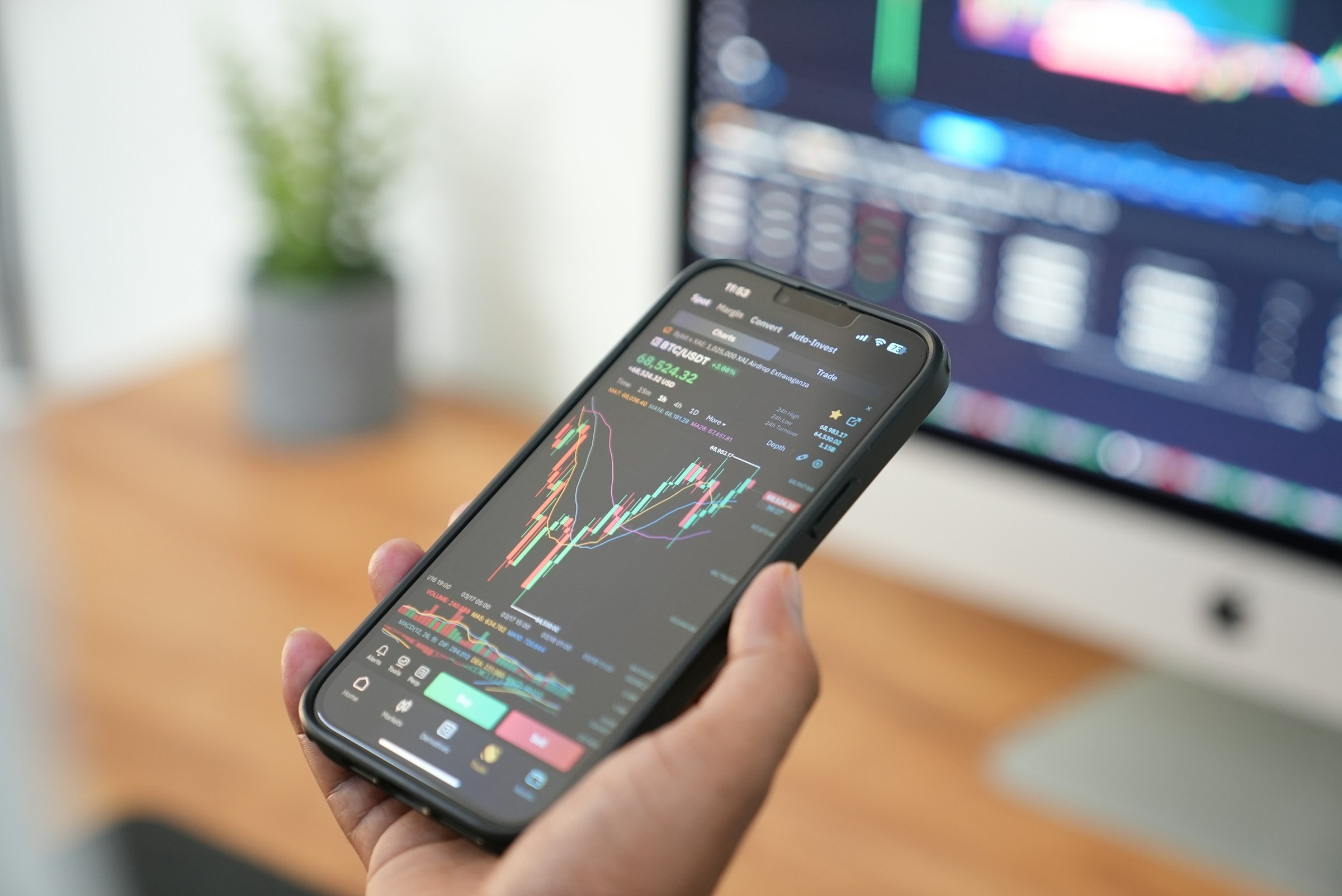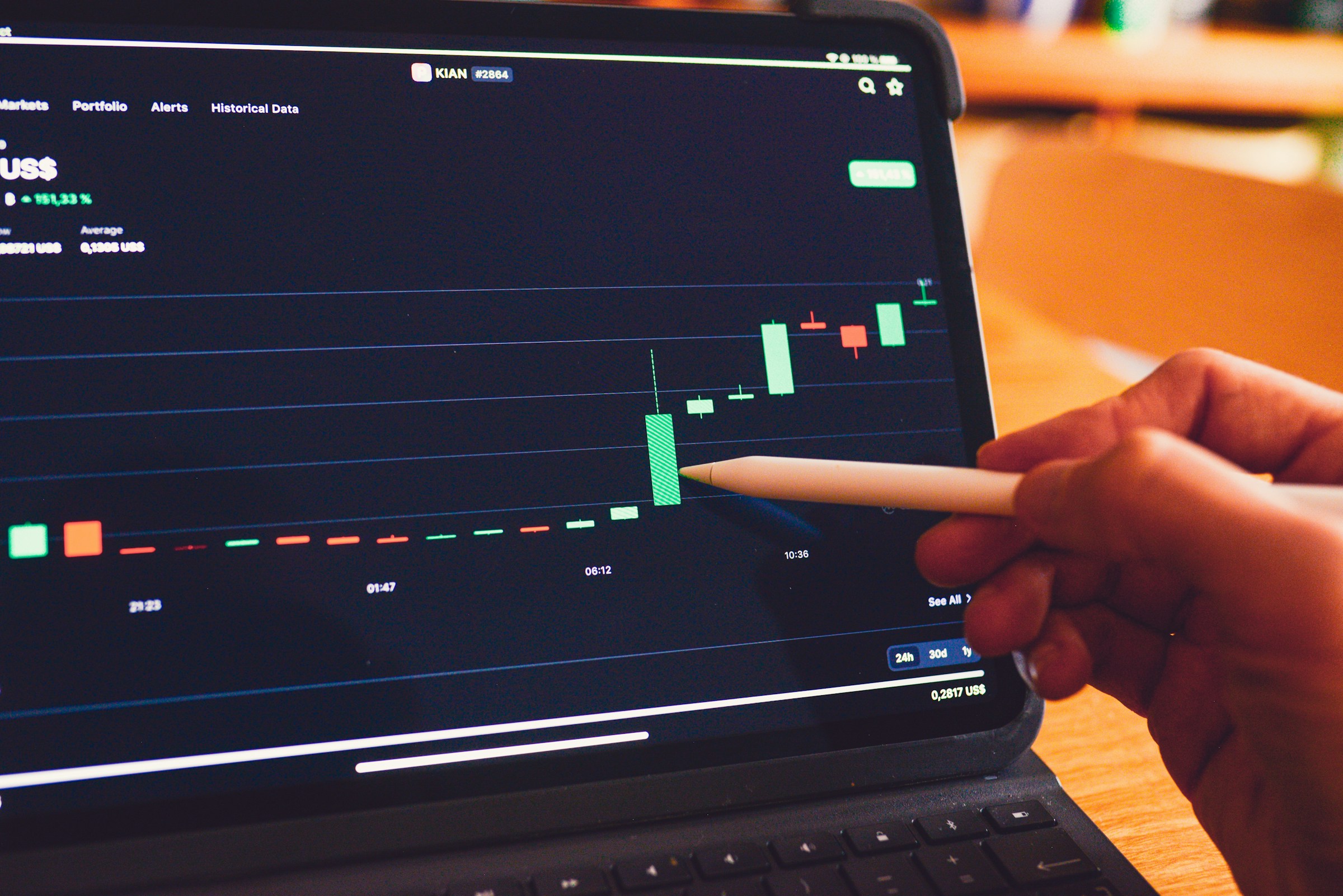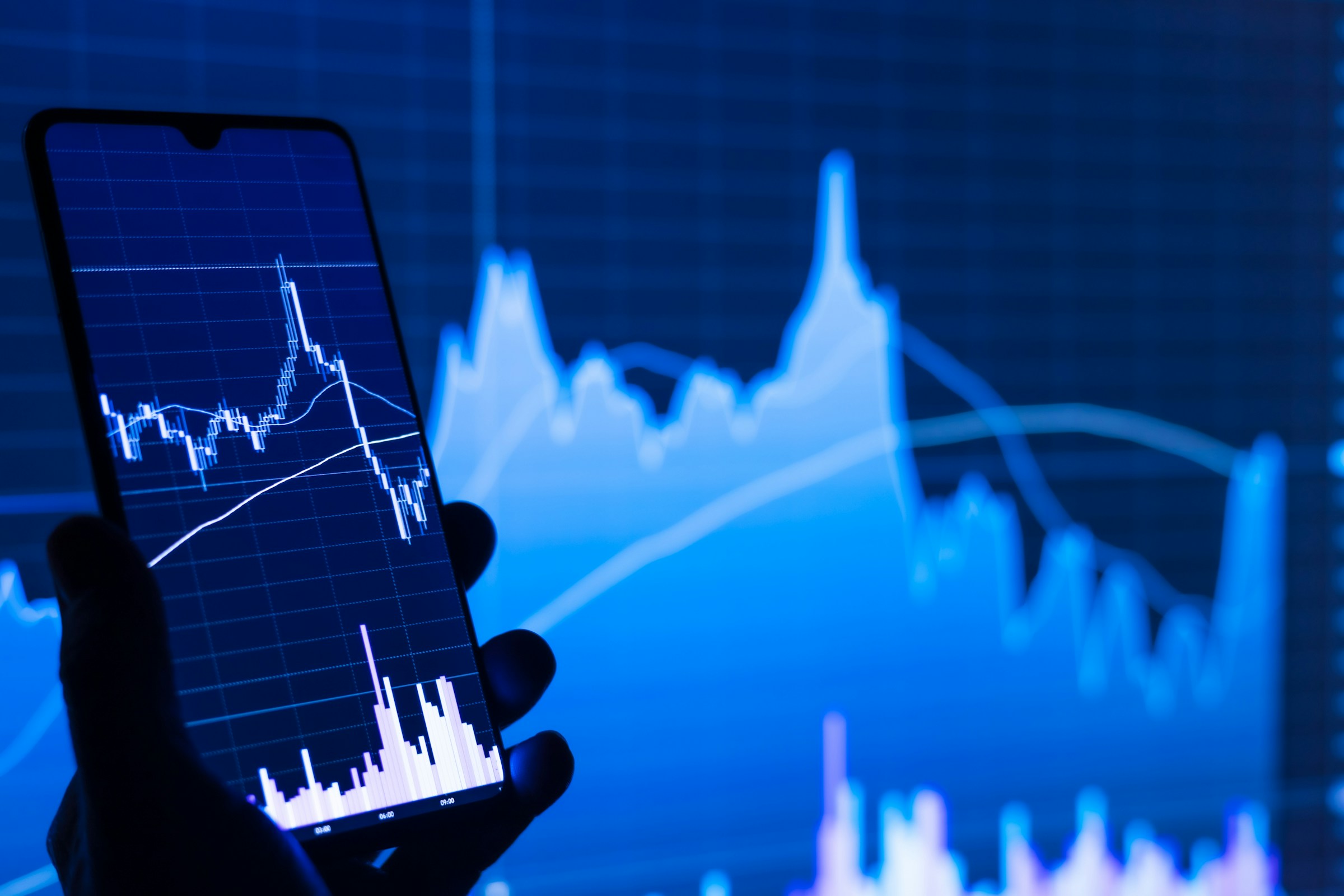Discover 20 proven automated futures trading strategies designed to optimize performance and help you trade smarter with confidence.

Ever watched a market swing and wished you could strip emotion from every decision? Trading Using AI turns rules into automated futures trading strategies that run 24/7, backtest historical data, generate signals, and enforce position sizing and stop loss rules so you trade with discipline. This guide explains how algorithmic trading, trend following, and mean reversion models, execution algorithms, and simple risk management can help you trade futures more efficiently and aim for steadier profits with less effort.
To make that practical, Trading Bot Expert offers the best trading bots that bundle proven strategies, easy backtesting, and precise risk controls so you can confidently automate futures trades and spend your time improving ideas instead of babysitting screens.
.jpg)
The momentum strategy capitalizes on the tendency of assets that have performed well recently to continue their upward or downward trajectory. By identifying strong trends over periods of 3 to 12 months, traders enter positions that align with the prevailing price momentum. This approach relies heavily on trend persistence.
For example, a trader might buy futures contracts showing substantial gains over the past quarter, expecting the trend to continue. While widely effective in equity markets, momentum strategies may need modification when applied to bonds or commodities, where momentum effects can vary.
Mean reversion assumes prices tend to return to their average or mean after extreme moves, like a stretched rubber band snapping back. Traders watch for prices that diverge significantly from their typical levels, betting on a reversal to average values.
Technical indicators like moving averages, RSI, Bollinger Bands, and stochastic oscillators help detect overbought or oversold conditions. A common tactic is buying when prices fall below the lower Bollinger Band and selling when above the upper band, profiting from price rebounds.
Pair trading involves simultaneously taking long and short positions in two highly correlated assets, betting that any deviation between their prices will eventually converge. This strategy is market-neutral as it profits regardless of the overall market direction.
Traders often use statistical measures like cointegration to identify correlated pairs, such as two related commodities or stocks. When one asset temporarily underperforms relative to its pair, the trader buys it and shorts the other, expecting their prices to realign.
Trend following focuses on identifying sustained directional movements in prices, using tools such as moving averages or price breakout levels. Traders stay with a trend as long as it remains intact, entering positions in the trend direction and exiting when momentum fades.
This approach works best in markets with persistent directional moves, often over more extended time frames. However, trends in futures markets can vary, so careful timing and risk management are key to a successful trend-following system.
Statistical arbitrage uses sophisticated algorithms to detect minor price inefficiencies between related securities. By systematically taking advantage of these minor discrepancies, the strategy aims to generate steady, incremental profits over time.
Often linked to high-frequency trading, it relies on mean reversion principles and massive computational power to execute many quick trades. Due to its complexity and technological demands, it's usually employed by institutional traders rather than retail investors.
Market makers place simultaneous buy and sell orders to offer liquidity and profit from the spread between bid and ask prices. Automated systems rapidly adjust orders based on market conditions to remain competitive, balancing inventory risk.
Because speed is crucial, this approach leverages advanced technology and often operates in highly liquid markets. Although common among professionals, some retail traders also adopt simplified versions during times like market openings.
This strategy decodes investor emotions by analyzing news headlines, social media chatter, and financial reports through natural language processing (NLP). The goal is to detect market sentiment shifts and place trades anticipating reversals or continuation of trends.
Sentiment often exhibits mean reversion—extreme pessimism may signal buying opportunities, while excessive optimism could presage pullbacks. Machine learning models can enhance forecasts but may struggle with sudden changes in sentiment due to unexpected events.
Machine learning-based strategies use AI algorithms to learn from historical data, identifying complex patterns and adjusting to evolving market conditions. They can process vast datasets to predict future price movements and optimize trade entries and exits.
Such adaptive systems improve over time with feedback but require rigorous model validation and risk controls. Their flexibility makes them suited to diverse futures markets with changing dynamics.
Volatility trading targets assets exhibiting large price movements by using derivatives like options and futures. Traders seek to profit from volatility spikes regardless of price direction, employing strategies such as straddles or strangles.
This approach thrives in turbulent markets, turning price uncertainty into opportunity. Managing risk is vital as volatility can be unpredictable, and sudden shifts may cause rapid losses if unhedged.
HFT relies on ultra-fast execution to capitalize on fleeting price inefficiencies, often executing thousands of trades within seconds. Success depends on minimizing latency and utilizing powerful algorithms to detect and act on opportunities before others.
Due to its infrastructure needs and regulatory scrutiny, HFT is mainly restricted to institutional players. Retail traders typically cannot compete effectively using this strategy.
Automated news-based strategies scan and analyze breaking news using algorithms to gauge its potential impact on futures prices. Trades are triggered quickly to exploit price moves induced by market reactions.
This requires robust natural language processing and event classification to distinguish significant news from noise. Timing is crucial as delays drastically reduce profitability due to fast market adjustments.
By automatically detecting classical chart patterns such as head and shoulders, triangles, or flags, pattern recognition algorithms forecast likely price moves. Machine learning techniques like convolutional neural networks (CNNs) are increasingly used for improved accuracy.
This technical analysis tool transforms visual pattern identification into quantifiable signals, helping traders act on repeatable price behaviors captured from historical data.
Focused on specific occurrences such as earnings reports, economic releases, or geopolitical events, event-driven strategies anticipate resultant price movements. Automated systems analyze expected impacts and enter positions before or shortly after the events.
Success depends on precise timing and understanding the implications of events. Often combined with news analysis and volatility evaluation, this approach targets heightened price action periods around events.
Breakout strategies aim to capture price movements when an asset breaks through established support or resistance levels. Indicators confirm the breakout's strength to reduce false signals before entering trades.
For example, if the gold price breaks above $2000 per ounce resistance, a breakout trader might buy, expecting further upward momentum. This method suits markets prone to sudden directional moves following consolidation.
Correlation-based strategies analyze relationships between different futures contracts or asset classes to identify trading opportunities. When typical correlations diverge, traders speculate on their eventual realignment or continuation of change.
By understanding interconnectedness, such strategies exploit broader market dynamics and cross-asset interactions, providing diversified methods to capture gains from shifting relationships.
Options trading strategies utilize the unique characteristics of options contracts to capitalize on price direction, volatility, and time decay. Techniques like spreads and straddles allow traders to anticipate market moves with controlled risk exposure.
This approach requires detailed knowledge of option pricing and Greeks to craft balanced strategies that profit under specific market conditions, enhancing futures trading portfolios.
Order flow trading examines the volume and velocity of buy and sell orders entering the market to predict short-term price moves. By interpreting where demand concentrates or withdraws, traders gain insights beyond typical price charts.
Automated systems track these micro-level market behaviors, potentially identifying liquidity shifts and impending reversals faster than conventional methods.
Seasonality strategies leverage recurring, calendar-based trends in futures markets, such as commodities with predictable demand cycles. Examples include the “Sell in May and go away” trend in stocks or increased oil demand in winter.
By aligning trades with historical seasonal tendencies, traders anticipate periods of strength or weakness, enhancing timing accuracy for better returns.
Quantitative strategies combine statistical models and computational algorithms to uncover profitable trading signals. Through rigorous backtesting on historical data, traders develop rule-based systems grounded in objective analysis.
This scientific approach minimizes emotional bias and enhances consistency, enabling strategy refinement using comprehensive datasets and robust mathematical tools.
Arbitrage involves exploiting price differences of identical or closely related assets across various markets or instruments for near risk-free profits. For example, triangular arbitrage in currency futures exchanges three currencies to leverage rate discrepancies.
Because arbitrage windows close rapidly, this approach demands high-speed execution and sophisticated software, making it primarily feasible for institutional traders with advanced infrastructure.

Automated futures trading is the use of computer algorithms to buy and sell futures contracts without any manual intervention. Instead of a trader watching the market and making decisions on the fly, an automated system executes trades based on a set of predefined rules and conditions. These rules are coded into the system, allowing it to act instantly when specific market criteria, such as price movements or technical indicators, are met.
This type of trading removes the need for constant monitoring. The system can react to price changes and market signals much faster than a human can, executing trades in split seconds when opportunities arise. Because it operates without emotion or hesitation, automated trading can avoid common human errors like delayed decisions or impulsive trades.
The core of automated futures trading lies in the carefully designed algorithm that dictates when and how trades occur. Traders program their strategies into the algorithm, which then analyzes live market data, determines entry and exit points, and places orders accordingly. Common programming languages for these algorithms include Python and C++. Before going live, these strategies are often backtested with historical market data to ensure their effectiveness.
Automated trading also depends heavily on the trading platform and execution protocols. A reliable platform ensures that orders are accurately placed and executed promptly, maximizing the benefits of the algorithm’s speed and precision. This combination of technology helps traders increase efficiency and reduce risks tied to manual oversight.
Ultimately, automated futures trading brings a decisive advantage to traders by blending speed, accuracy, and discipline. It streamlines the entire trading process, allowing strategies to be consistently applied without the emotional or psychological challenges faced by human traders.
For those interested in stepping into automated futures trading, consulting with experts can be invaluable. Trading Bot Expert, for example, offers tailored trading recommendations that fit individual traders’ needs and budgets, helping to optimize strategies and harness the full potential of automation in the futures market.
Which trading bot is right for you? Take our free Trading Bot Match Quiz at Trading Bot Experts and get a personalized recommendation in under 60 seconds, plus a free e-book with honest reviews, performance stats, and red flags to avoid; we also highlight the best trading bots.
.jpg)
Start by clearly outlining your trading goals and the level of risk you are willing to take. Understanding your risk tolerance is critical to keeping your strategy aligned with your financial capacity and emotional comfort.
Formulate a detailed plan, specifying entry and exit rules, trading instruments, time frames, and risk management rules such as stop losses. Your plan should also decide on the type of trades, e.g., long, short, or spread trades.
Translate your trading plan into specific algorithmic rules. This includes the technical indicators or signals your system will use to identify opportunities, and how it will act on them, such as placing trades or sending alerts. Common indicators include moving averages and RSI.
Select a futures trading platform supporting automated trading and API access. The platform
should be intuitive, support multiple order types, have competitive fees, and preferably offer mobile trading capabilities.
Convert your designed strategy into code suited for your chosen platform's programming language. If coding expertise is limited, you may hire a professional developer.
Using historical market data, rigorously test your automated strategy to evaluate its performance metrics like win rate, drawdown, and profit factor, adjusting the algorithm as necessary to optimize results.
Incorporate risk controls such as stop-loss, guaranteed stops, trailing stops, and take-profit limits to protect capital and maximize gains.
Even after deployment, continuously monitor your system's live performance and make improvements in response to changing market conditions or any system malfunctions.
Keep abreast of relevant economic news and events that may affect futures markets, integrating this awareness into your strategy adjustments.

One of the standout benefits is the ability to trade 24 hours a day. Automated systems are not constrained by human limitations or regular market hours. This means trades can be executed at any time, allowing you to seize opportunities instantly, even when the markets are officially closed. This constant vigilance helps capture price movements that manual traders might miss.
Emotions can often cloud judgment and lead to impulsive decisions in trading. Automated systems follow strict, pre-defined rules without hesitation or anxiety, ensuring consistency and discipline. This helps reduce costly mistakes caused by fear or greed, promoting steadier results over time.
Automated futures trading systems allow traders to operate across different markets simultaneously. Whether it’s commodities, stocks, or currencies, executing multiple trades at once diversifies risk and amplifies profit opportunities. This multi-tasking capability would be challenging to manage manually.
You don’t have to be an expert to benefit from automated futures trading. These strategies simplify the trading process, enabling beginners to participate effectively without deep market knowledge. By selecting reliable automated platforms, even novices can trade efficiently without the steep learning curve.
A practical advantage is the availability of demo accounts on many platforms. Traders can test an automated trading strategy with virtual funds, gaining confidence without risking real money. This trial phase helps evaluate system performance and suitability before committing capital.
Backtesting is an essential feature for refining automated strategies. By running your trading system against past market data, you can gauge its potential effectiveness and identify weaknesses. It’s a vital step that supports informed decision-making, although past performance is not a guarantee of future results.
Futures trading often requires a relatively small initial investment due to margin trading. Automated trading can be started with modest funds, sometimes as low as a few hundred dollars. This lowers the financial barrier to entry, making futures accessible to a broader range of investors.
Futures are inherently leveraged instruments, meaning traders control a considerable contract value with a smaller amount of money. Automated systems help manage leverage carefully, potentially amplifying profits while enforcing risk controls to prevent outsized losses.
Unlike many other investments, futures contracts easily facilitate short selling, enabling traders to profit from declining markets. Automated traders can incorporate short-selling strategies seamlessly, adding versatility and enhanced profit potential during market downturns.
Compared to traditional stock trading, futures often involve lower commission fees or sometimes no commissions at all (excluding particular exchange and clearing fees). Automated futures trading can capitalize on these cost advantages, improving net returns and making frequent trading more economically viable.

One primary risk is over-optimization, where trading algorithms are excessively tailored to historical market data. This "curve fitting" often results in excellent backtest performance but poor real-time results because the system becomes too specialized to past conditions and lacks adaptability to new market events and volatility.
Automated strategies depend heavily on technology infrastructure. Software glitches, bugs, network interruptions, or hardware failures can disrupt trade executions, sometimes with costly financial consequences. For example, a connectivity loss during a critical market move might prevent a stop-loss order from being executed, exposing the trader to greater losses.
Unexpected events such as economic announcements or geopolitical crises can cause rapid price swings that automated systems may struggle to handle, especially those relying on mean reversion or small price fluctuations. Algorithms can trigger unintended trades or fail to adapt quickly, compounding potential losses.
Futures trading inherently involves leverage, allowing considerable market exposure with relatively small initial capital. While leverage can amplify gains, it equally magnifies losses. Automated strategies that do not adequately manage leverage exposure risk can result in significant drawdowns and margin calls.
Specific futures contracts may have lower liquidity, particularly those for niche commodities or with longer expiration dates. Automated trading in such markets can face slippage, where actual trade prices differ from expected prices, making entry or exit points less efficient and potentially detrimental.
Highly complex automated strategies can lack transparency, leaving traders unsure why specific trades occur, especially when market conditions change abruptly. This opacity complicates troubleshooting and refining the system to improve performance.
High-frequency trading and automated strategies can amplify market movements, occasionally triggering flash crashes or increased volatility, as witnessed in events like the 2010 Flash Crash. These systemic risks highlight the need for careful oversight and robust risk controls.
Automated trading must comply with regulations that vary by jurisdiction. Failure to adhere to rules such as position limits, reporting requirements, or order execution protocols can result in penalties and operational disruptions.

Automated strategies use predefined algorithms to execute trades based on specific market signals, eliminating emotional biases and enabling rapid responses to market changes. These systems can operate continuously, providing opportunities beyond human limitations. However, they require technical competence and a solid grasp of market dynamics.
Reflect on your trading goals and preferred style, such as day trading, swing trading, or long-term position holding. Automated trading fits well for those who want consistent, rule-based execution without constant manual intervention. It’s particularly advantageous if you want to avoid emotional decision-making and are comfortable with technology.
Implementing automated strategies often demands familiarity with platforms that support algorithmic trading, such as MetaTrader or ProRealTime. Understanding backtesting, strategy optimization, and monitoring is crucial. You may need programming skills or access to prebuilt systems that can be customized to your needs.
Automated trading can amplify gains but also risks due to the leverage inherent in futures contracts. A robust risk management plan, including stop-loss orders, position sizing, and continuous strategy evaluation, is essential to safeguard your capital.
Choose platforms and strategies backed by strong technical infrastructure with reliable execution speeds, system stability, and good customer support. Continuous monitoring for system errors or market changes that may render strategies less effective is vital.
Advantages include emotion-free trading, speed, 24/7 market access, and backtesting capabilities. Challenges include overfitting strategies to past data, technological risks, and adapting to evolving markets. Ensure you understand these factors to set realistic expectations.
Before committing significant capital, use demo accounts to refine your automated strategies in live market conditions. Gradually scale up as you gain confidence and evidence of consistent performance.
Which trading bot is right for you? Take our free Trading Bot Match Quiz and get a personalized recommendation based on your budget, goals, and risk tolerance in under 60 seconds. We will also send you a free e-book with honest reviews, performance stats, and red flags to avoid in the trading bot world. Whether you want hands-off profits or a high-performance AI tool, this guide helps you make the smartest choice. Click here to take the quiz and get your free report. What outcome matters most to you right now
The quiz measures capital, preferred instruments, target return, acceptable drawdown, and the time you can commit to monitoring a system. It asks about leverage tolerance, futures contracts you want to trade, and whether you need cloud execution or a local solution. It also captures preferences for rule-based systems versus machine learning models, and whether you want real-time signal generation or end-of-day batch signals. These inputs let us match you to algorithmic trading systems that fit your size and goals.